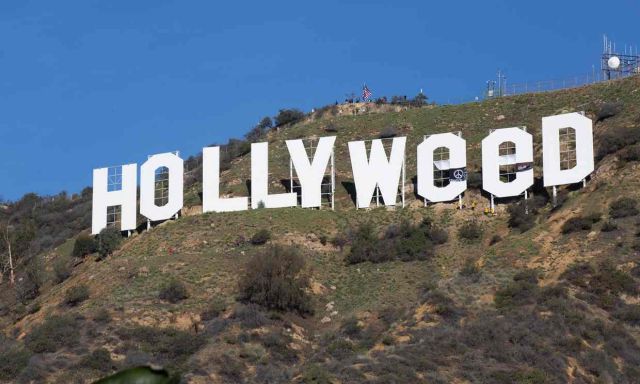On blowing shit up
My house faces one of the world’s most famous signs. I salute the hooligan who pulled off this typographic prank on New Year’s Eve using four pieces of fabric and a ladder.
The occasion, I presume, was California’s first day under Proposition 64, a recently approved ballot measure that legalizes recreational marijuana statewide. This is not, however, the first time for this particular prank—a man named Daniel Finegood made the same conversion in 1976. Also part of his vandal’s oeuvre: HOLYWOOD, OLLYWOOD, and OIL WAR.

When I give talks about typography, I sometimes hear comments afterward like Now I get it! Typography is about making things pretty! I wouldn’t say that’s wrong, exactly. The goal isn’t to make things to look bad. (Though sometimes ugly is better than pretty.)
But it still seems to omit something crucial: namely, why we’re making things pretty (or ugly, etc.)
My friend and college classmate Richard Nash, who like me thinks a lot about the role of books in the digital age, once wrote a terrific essay for the VQR titled What is the Business of Literature? It’s a great read, and ends perfectly: The business of literature is blowing shit up.
I agree. Moreover, I’d say the same is true about typography. Not necessarily in a chaotic or anarchic sense. (In fact, sometimes we typographers like to blow shit up real pretty.) But rather in the sense that Richard means: that human art and craft can be the radical agent of change … the barbarian.
As Richard argues, to regard the book strictly as a technological artifact—as it often seems Big Tech would have us do—omits its most vital role. Books aim to bend the thinking of others. To derail trains of thought. With Typography for Lawyers, I’ve especially enjoyed hearing from attorneys who say things like I can’t believe I went 20 years without knowing this stuff. That’s typography, amigo. Kaboom.
More broadly, when I started working with typography, what I enjoyed most was learning that I could make things that were arresting—that made people stop and pay attention. Of course, you can do this with ugliness. But also with beauty. In that sense, they can be equally subversive.